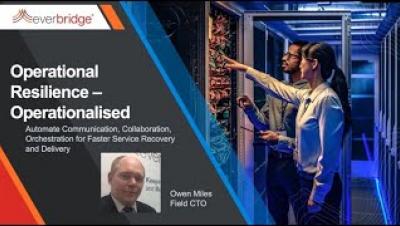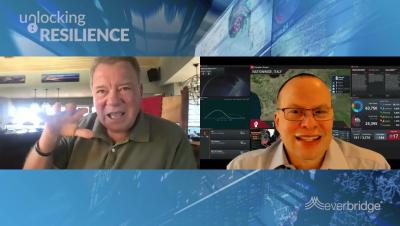Operations | Monitoring | ITSM | DevOps | Cloud
October 2021
Business Continuity Planning for the Retail Industry
Enduring the COVID-19 pandemic has highlighted a unique opportunity for businesses in the retail industry to reshape how they operate. With dramatic shifts in consumer behavior and an increased reliance on digital services, retailers had to look for innovative ways to adapt to the current reality. In addition to developing new modes of business, retailers must make every effort to protect their newly minted operations should another major disruption take place.
Business Continuity Planning for the Manufacturing Industry
For those in the manufacturing industry, critical events threaten financial loss due to unplanned downtime, reduced factory utilization rates, lost revenue, and even employees put at risk.
Unlocking Resilience - Episode 1 - William Shatner - Resilience Makes the Leader
People Risk Management and Agile Organizational Resilience
As COVID-19 changed the landscape of global business travel, organizations must respond with agile, comprehensive plans that can account for continually evolving risk environments and regulatory requirements. It has become necessary for many organizations to revise old outlines and plans to match the realities.
Ray Baum's Act
RAY BAUM’s Act requires that first responders have the necessary information needed to pinpoint the “dispatchable location,” and quickly reach a 9-1-1 caller regardless of the device they dial from, or their exact location inside a large building. Whether the calling device is wired, wireless, on-premise, or remote, if it connects to an MLTS it will fall under the FCC’s enforcement.
What is "Dispatchable Location"?
All businesses in the United States must now comply with Section 506 of the RAY BAUM Act. This requires organizations to automatically provide emergency call centers, or Public Safety Answering Points (PSAPs), with “dispatchable location” information alongside every emergency call placed from their network. However, defining exactly what that information must include can be a challenge.
Kari's Law
Under Kari’s Law, any calling device within your U.S. organization must be able to directly dial 9-1-1, without a prefix. All devices that can dial a phone number must have these capabilities. Failure to comply with this 2020 law could result in penalties from the United States Federal Communications Commission (FCC). Luckily, it’s not difficult to reach 100% compliance with the right guidance and technology. This article will show you how to get up to speed quickly.
Developing A Disaster Recovery Plan
While it may seem like a disaster recovery plan and a business continuity plan are the same, businesses must consider their differences. A Business Continuity Plan (BCP) is an umbrella program comprised of various smaller parts that aim to keep operations running smoothly before, during, and after a disaster occurs. A Disaster Recovery Plan (DRP), on the other hand, zeros in on how to remediate the disaster as it transpires.










